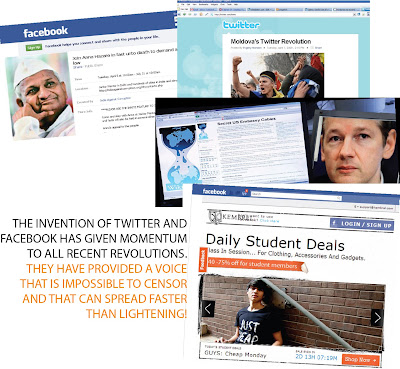BREAK KE BAAD… OOPS, SORRY… PEHLE!
The movie was insipid, I agree! However, marketers have important lessons to learn – no, not from the film, but its title. Think about it, all our marketing activities are centered around the “Break”. The “breaks” are our lifelines. On TV, it’s the commercial break where all the action happens for marketers!
But does TV still work? Does it hold as much promise today as it did earlier?
IS TV DEAD?
TV has almost become a dirty word in today’s marketing world. Most people, especially the younger generations, seem to be spending all their time online. So who is watching TV?
According to the Association of National Advertisers, a survey done on US marketers showed that 62% of them believed that TV advertising had become less effective in the last couple of years.
However, they were in for a surprise as according to Deloitte’s 2009 State of the Media Democracy report, Americans were watching 18 hours of TV in 2009 as compared to 16 hours in 2008 – and 26% more people in 2009 than in 2008 choose TV as their favorite media! According to the 2009 Three Screens Report of Nielson, Americans were watching more TV than ever before. Out of the three screens, i.e, TV, internet and mobile, the former beat the others hallow, be it UK or USA. The Institute of Practitioners in Advertising (IPA) comes out with the most thorough surveys of media habits of consumers. According to its Touchpoint 3 survey, people in UK too were watching 3.7 hours of TV daily as compared to 1.8 hours of internet. In India, where TVscreens are more common than other screens, it’s definitely TV that wins!
The one gadget that is owned by most of the population of any country is TV. Also, the number of TV’s in each household is increasing. Some say that youths are watching less TV, whereas data suggests that historically, youngsters have always watched less TV and there has always been a positive correlation between age and TV viewership.
While it may sound trendier to talk of online and emerging media, the fact is that nothing motivates consumers to buy like TV spots can! So Fox Network focused on selling its TV spots and not its digital platform. Unlike other TV networks like NBC and CBS, who went to marketers with presentations showcasing not just their TV media but digital too, Fox decided to focus on only its TV networks. Their logic was simple. Nothing motivates a consumer to buy like a TV spot can.
According to a customized research done by the firm Marketing Evolution, TV accounts for almost 70 percent of the impact on a consumer’s purchase decisions. It’s an undisputed fact that the mass reach of TV and the power it has to build mass awareness is leaps and bounds ahead of any other media, be it radio, internet, out-ofhome or even cinema. This was reconfirmed by Price water house Coopers in a study to find the correlation between brand value and communication effectiveness. Out of all the forms of media, i.e, TV, press, internet, radio, direct mail and outdoors, the study concluded that on an average, £1 million increase in TV marketing investment yields £4.5 million in sales. There was a very high correlation between increase in brand value and advertising investment on TV. It just proved one old fact – nothing can build brands like TV can.
The internet has not been able to erode the power of TV. Rather, according to the study done by Les Binet and Peter Field (which incidentally is the most quoted study), campaigns that used the TV medium have been growing in effectiveness over the past three decades! In fact, TV advertising today has become more effective over time, and every possible research is proving it. Yes, direct mail is fast being replaced by the internet, but no one can replace TV. Where else will you find the comfort of snuggling up on a couch in the living room watching your favorite soap and sipping a hot bowl of “mom-made” soup? TV is alive like never before and every research is proving that.
HOW DO I GET NOTICED?!
Yes, agreed that we all love watching TV. But do we love watching the ads? Do we notice the zillions of them shown during the break? Actually, it’s the “Breaks” that are a problem and not the TV! Like in life, so in marketing, we spend most of our time thinking of the “Break”, be it the break up, or the big break, or the lunch break – or for marketing men, the commercial break! Not for life, but yes, an interesting innovation seems to be happening for marketing men. It’s called “virtual advertising”. A digital image of the product/brand appears on TV screens while one is viewing a sports match or a programme. So, I don’t need to advertise during the break. Rather, digitization helps me insert my brand during the programme. Of course, if it’s a match, the stadium audience does not see the products or the advertisements, as they are, well, virtual! But the TV audience does! This new innovation can be seen during the cricket matches. Since it all happens during the match, nobody can miss it. Advertisers don’t need to wait for the commercial break where chances of getting lost are very high. They can now digitally and very creatively put their ads during the show – virtually breaking the clutter!
Vikram Tanwar, the CEO of the sports management company Planman Stars, who is responsible for getting this technology to India, says that it’s much more effective than the regular TV commercials.
For one, it makes your ad “zapper proof”. It can be changed according to regions. If the programme is being aired in Pakistan, India and Bangladesh, each audience gets to see its own brands in the virtual advertisements. Sponsors can choose to show their advertisements on a country-bycountry, region-by-region, or even marketby- market basis! The advertisement can stay on the screen for 30 seconds... or 30 minutes, depending on where and how you insert it. It can come on a virtual billboard, or on the ground, or pop-out from the ground, or fall from heaven, or emerge from the spectators – the way you can innovate is limitless. It’s an astonishing technology, exploiting the simple fact that people pay more attention during a show than during a commercial break – so put your advertisement right there.
This technology debuted in the USA in 1998, and now Zee’s Ten Sports is doing the same with Micromax Mobiles, Royal Stag and McDowell’s “virtually” reaching out to their audiences – before the break!
These advertisements are being inserted in absolutely novel, innovative ways into almost all TV programmes; sports and nonsports. Because it’s so different, the recall of these advertisements is as high as 84%. Since they are interesting, more than half the audience did not mind them.
Virtual is the new way to grab eyeballs this year!
A NECESSARY EVIL
Call it what you may, but TV is here to stay. For even though ‘online’ is at the top of everybody’s minds, it’s not resulting in increased sales or brand building – at least, not yet. The lure of TV is immense and you just need to look at the Super Bowl rates to understand the impact of TV. On February 6, almost 100 million Americans (and many more in other parts of the world) would be watching the game. No wonder, CBS is charging $2.5 million for a 30 second commercial – and all its commercial slots have already been sold out! That’s the power of this media.
Groupon, the company that sells bargain deals online, knows that it’s not the help of Google, but of TV that it requires in order to grow. (Google tried to acquire it for $6bn, but couldn’t) It could not find a slot during the game, but it has settled for the pregame spot. After all, TV builds brands, like no other. Even the internet biggies know it and are not leaving a chance to be seen on it! One man who really needs brand building and knows how to do it is Obama. He, like every year, is not going to miss TV on February 6. No, not watching it, but coming on it. He has agreed to be interviewed on Fox Sports sometime during the fourhour pre-game show. Super Bowl is after all the world’s most watched programme; and no one, not the big brands or even the President, wants to miss it.
If you need to build a big brand, you have to think “TV”. Use your creativity to “virtually” rise up from the clutter. A new way is of course to air your advertisement “break ke pehle” – before the break! It works!


Comments
Post a Comment